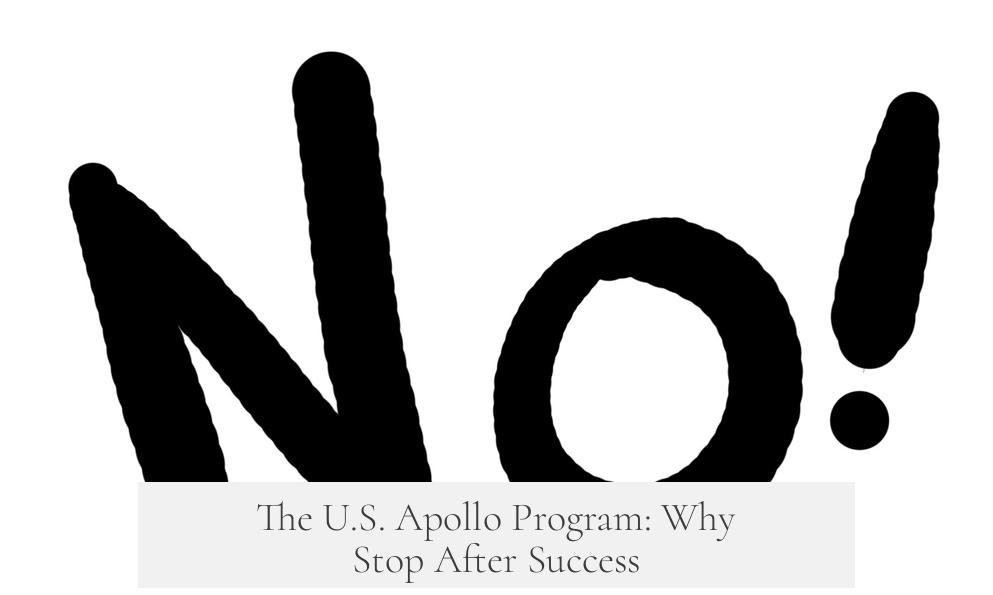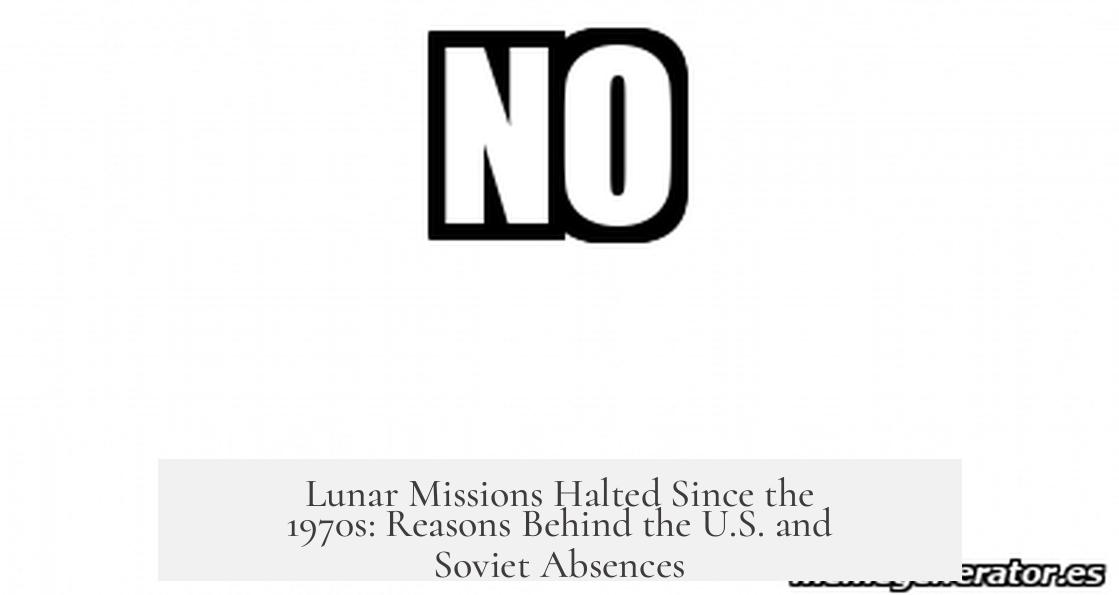Manned lunar missions have not occurred since the 1970s primarily due to the enormous costs and shifting political priorities faced by the United States, while the Soviet Union never executed such missions because of fragmented leadership, lack of a unified program, and organizational challenges despite having the technology.
The U.S. Apollo program ended after the 1970s largely because of financial and political factors. The Apollo program, which landed humans on the Moon six times between 1969 and 1972, was extraordinarily expensive. Adjusted for inflation, the entire Apollo program cost about $257 billion. During its peak spending years (1964-1966), NASA’s budget consumed roughly 4% of the entire U.S. federal budget. This massive investment was justified by urgent Cold War competition with the Soviet Union, known as the Space Race.
The political context behind Apollo was unique. The launch of Sputnik 1 by the Soviet Union in 1957 shocked the U.S. government and public, sparking fears about Soviet technological and military superiority. Early presidents like Dwight Eisenhower took a cautious, incremental approach to space. However, John F. Kennedy saw lunar exploration as a way to assert U.S. global leadership and used it to secure political support during his 1960 campaign. He highlighted a perceived “Missile Gap”—a supposed gap in missile capabilities favoring the USSR—to rally support for a Moon mission.
Once the U.S. achieved its goal of landing astronauts on the Moon, the political and public urgency diminished. The space program lost its unique Cold War justification. Without the same geopolitical tension, the American government could not justify spending billions on expensive lunar missions with primarily scientific objectives. NASA’s post-Apollo missions focused more on Earth orbit, such as the Space Shuttle program, which provided more sustainable and practical benefits.
Conversely, the Soviet Union never completed a manned lunar landing despite developing significant technologies for such missions. Their N-1 rocket, intended to rival America’s Saturn V, and the LK lunar lander were technical achievements aligned with a lunar program. Yet, the Soviets lacked a centralized, systematic space program aiming explicitly at landing cosmonauts on the Moon.
The Soviet space program was shaped by political leadership and propaganda goals rather than long-term strategic planning. Nikita Khrushchev, for example, pursued space achievements to demonstrate ideological superiority rather than scientific progress. Sputnik’s launch was meant more to embarrass the U.S. than to initiate a robust space exploration agenda.
Moreover, unlike NASA—which centrally coordinated U.S. space efforts—the Soviet program was fractured among competing design bureaus and ministries. These rival groups developed parallel technologies and missions without clear coordination. This lack of cohesion led to repeated technical setbacks, duplication of efforts, and organizational inefficiency.
The Soviets conducted impressive space milestones during the 1960s, such as Yuri Gagarin’s first human orbital flight and Alexei Leonov’s first spacewalk. However, some of these achievements were rushed to beat American initiatives, sometimes at great risk. Leonov’s spacewalk, for instance, nearly ended in disaster because of hastily built technology and inadequate preparation. Still, these feats did not stem from a broader plan to reach the Moon.
Technical difficulties also plagued the Soviet lunar ambitions. The N-1 rocket, essential for a manned Moon landing, failed in all its launch attempts, preventing any crewed lunar missions. This failure was partly attributable to the lack of a unified management structure and conflicting engineering teams.
In summary, the cessation of manned lunar missions since the 1970s is due to the high costs and reduced political drive within the U.S. The unique Cold War era that propelled Apollo did not continue, making Moon missions financially and politically unsustainable. Meanwhile, the Soviets never carried out crewed lunar landings because of fragmented authority, competing organizations, and technical setbacks despite significant technological development.
- The Apollo program ended due to its enormous expenses and fading Cold War urgency.
- U.S. political motives during the 1960s, especially Kennedy’s leadership, drove the Moon missions.
- The Soviet Union lacked a centralized lunar program and failed to coordinate competing agencies.
- The Soviet N-1 rocket and LK lander were developed but never successfully flown with crew.
- Soviet space achievements were often driven by propaganda rather than long-term exploration goals.
Why Have There Been No Manned Lunar Missions Since the 70’s? And Never From the Russians?

Simply put: humans haven’t returned to the Moon since the 1970s because of cost, politics, and shifting priorities—and the Soviets never landed there because their space program lacked unified focus and political backing despite having the technology. Let’s break down this cosmic conundrum.
For those wondering if we just got lazy with the Moon, it’s not that simple. It’s an expensive, complicated affair, wrapped in Cold War politics, leadership choices, and the practical limits of budget and ambition.
The U.S. Apollo Program: Why Stop After Success?

From 1961 to 1972, the Apollo program threw everything at landing humans on the Moon—and it succeeded spectacularly with Apollo 11 in 1969. But landing people on the lunar surface isn’t like hopping on a bus. It demands enormous money.
Adjusted for inflation, Apollo would’ve cost about $257 billion today. During its peak, NASA’s budget was roughly 4% of the entire U.S. federal budget. Imagine that for one project! It was a massive investment made possible by a specific political moment: the Space Race.
President John F. Kennedy used space as a strategic wedge during his 1960 campaign. The “Missile Gap” scare—though mostly exaggerated—gave him ammo against Nixon. His pledge to put a man on the Moon before the decade ended was more than aspiration; it was a political necessity. The stakes were high: beating the Soviets meant proving U.S. technological superiority during the Cold War.
But once the Moon landing ticked the box, politicians questioned the point. What next? Without the unique Cold War pressures and a charismatic push like JFK’s, the will to pour billions into another space adventure vanished. Lunar missions became too costly to justify purely for scientific reasons or prestige alone.
The Soviet Approach: Almost There but Never Quite

Meanwhile, the Soviet Union had the guts and hardware for a Moon landing. They built the N-1 rocket, a beast designed to compete with America’s Saturn V. They crafted the LK lunar lander, their equivalent of Apollo’s landing module.
Yet, no unified plan existed to get cosmonauts on the Moon. Unlike NASA’s centralized mission, Soviet space efforts were wildly fragmented. Different bureaus competed, overlapping in goals and technology without centralized coordination.
The Soviet space program was driven more by leadership personalities and propaganda than by an organized, scientific vision. For example, Nikita Khrushchev pushed Sputnik 1 into orbit mainly to embarrass the U.S. rather than as a step toward space exploration. This approach caused rushed, risky moves—like Alexei Leonov’s famous but nearly fatal 1965 spacewalk, thrown together just to beat American astronauts rather than build toward a lunar mission.
After Korolev, the genius behind many Soviet firsts, died in 1966, the program lost its linchpin. Without his leadership, organizational chaos worsened. The Soviet Union never managed to rally around a concerted lunar landing goal.
Why No Return Trips To the Moon After the 70s?

So what’s stopping anyone—especially the U.S.—from going back?
- Cost still reigns supreme. Without a geopolitical imperative like the Cold War, justifying billions spent on lunar missions for pure science remains tough.
- Political focus shifted. Since Apollo ended, human spaceflight missions have turned to Earth orbit and space stations, like Skylab, Mir, and now the ISS, with clearer applications.
- Scientific priorities changed. Robotic missions can explore space cheaper and more safely, delivering valuable data without risking human lives.
- Technology and infrastructure. While rockets and spacecraft are advancing, no national program until recently has had the scale or political backing comparable to Apollo.
In fact, it’s only very recently that NASA’s Artemis mission reignited serious plans to land astronauts on the Moon again—aiming for the mid-2020s. This initiative also focuses on sustainable lunar presence, not brief visits, and involves international cooperation.
And Why No Manned Soviet Landings?

The Soviet saga explains itself:
- No unified, singular goal similar to Apollo’s “moonshot.”
- Political will evaporated without a clear driver once initial Cold War momentum faded.
- Technological and bureaucratic fragmentation hampered efforts.
- Failures and setbacks—like repeated N-1 rocket launch failures—drained resources and morale.
Despite their pride and some serious hardware, Soviet cosmonauts never made it to the lunar surface. The story is a lesson in how leadership and organization can be just as critical as technology.
What We Know Now—Looking Ahead

Understanding why manned lunar missions paused after the 1970s sheds light on the complex web of factors needed to land humans back on the Moon. Scientific curiosity alone doesn’t cut it. It takes political will, ample funding, strategic goals, and robust technology.
Now, global interest and new players like China are changing the landscape. China’s lunar missions and ambitions offer fresh momentum in the 21st century. NASA’s Artemis plans may dawn a new era where humans return not just to visit, but to set permanent footprints.
Reflecting back: Apollo wasn’t just about reaching the Moon. It was a product of the Cold War’s urgency and vision. The Soviets had the tools but lacked unified direction. The long pause since then comes down to costs, politics, and shifting priorities—not a lack of will or possibility forever.
Curious for More?
For deep-dives into the story behind the scenes, this excellent historical Reddit post unpacks fascinating details about Soviet and American space programs. It’s a must-read for space buffs!
So next time someone asks why we haven’t gone back to the Moon, you can tell them: We’ve got the tech, but space trips aren’t pocket change—and it takes the right mix of ambition, politics, and budget to fly humans there again.




